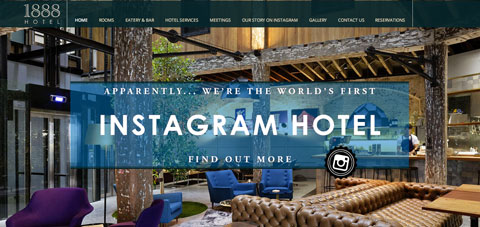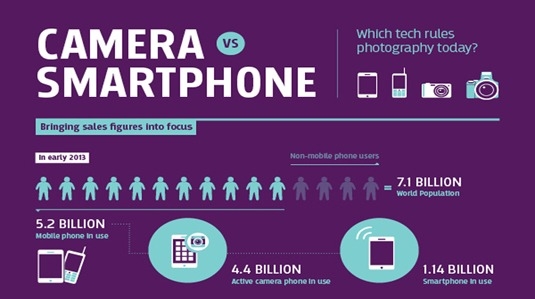It’s only fitting we return home to the USA for this month’s edition of SEJ’ SEOlympics – it is the month we celebrate our independence and all. However, we’ve opted to break the list up into regions – starting with blogs located on the East Coast. This way we won’t leave out any of the phenomenal marketer blogs in America.
But, before we get into the list, here’s some interesting stats surrounding content marketing in North America.
Based on research conducted from the Content Marketing Institute, 9 out of 10 marketers were using content marketing in 2013. Marketers also increased the number of marketing tactics they used from 8 to 12. Furthermore, the use of social media for content marketing jumped from 74% to 84%. Finally, marketers increased their content marketing budgets from 26% to 33%.
There is clearly a lot going on in the USA marketing world.
Don’t be surprised if more marketers in the United States jump on the content marketing bandwagon during the remainder of 2014.
To help you along your journey, here are 10 spectacular marketer blogs based out of the Eastern U.S. put together using subjective criteria like voice, content strategy, and quality.
If we forget to include a blog that you feel is worthy of this list please feel free to add your suggestion in the comment section below.
Finally, the following list is in no particular order. Enjoy.

Seth Godin probably doesn’t need an introduction. But just in case you’re not familiar with this best-selling author, here’s a brief bio.
Godin was in Mt. Vernon, New York. He graduated from Tufts University and later earned a MBA from the Stanford Graduate School of Business. In 1986, he launched his first business Seth Godin Publications from a New York City studio apartment. Over the years, Mr. Godin has founded, or co-founded, Yoyodyne and Squidoo, was Yahoo’s vice president of direct marketing, authored 20 books, developed the idea of “permission marketing,”and hosts the podcast the Startup School on Earwolf.
And there’s also his blog.
Seth’s Blog is one of the most influential blogs for marketers. He keeps things short and gets right to the point. Besides teaching you a lot about marketing, Seth’s Blog can show you how to blog effectively everyday.
SEER Interactive

SEER Interactive was founded in Philly back in 2002 by Wil Reynolds. Originally, SEER was just one a man operation that focused on search. Over time, SEER Interactive has built a team of talented and innovative people who have experience in search marketing, SEO, and analytics. However, what makes this agency unique is the team uses analytics to help companies land those important leads.
The SEER Interactive blog posts informative posts everyday of the week focusing on everything from creating engaging content to improving PPC performance. One example of an awesome recent post is “Launching An Infographic: 7 Steps To Success.”
While not directly related to the posts featured on the blog, we really enjoy the fact the profile picture of every team member is from their childhood. It’s a fun little feature that proves why SEER Interactive was named the Top Workplace by Philly.com.
Chris Brogan

Boston resident Chris Brogan has become a respected journalist, marketing consultant, and speaker on all things social media marketing. He’s also a best-selling author. His 2009 book Trust Agents: Using the Web to Build Influence, Improve Reputation, and Earn Trust was a New York Times bestseller. Mr. Brogan also founded PodCamp and Kitchen Table Companies. He’s president of Human Business Works and also serves on the board of advisors of HubSpot.
Mr. Brogan also happens to run a popular blog, which was once included in the Top 5 of the Advertising Age Power150.
What we really like about this blog is that Chris asks: “What do you SEEK from me? Not what I’m selling. What do you SEEK? What are you hoping to glean? When you come here, you say, “If I read X, I’ll be able to do something in my world HERE (where?).”
That’s a refreshing approach for a blog designed to help your business grow.
Internet Marketing Ninjas

We doesn’t enjoy a story about a company launched in a basement? That’s what happened when Jim Boykin founded We Build Pages in 1999. Over the last decade, the name was changed to Internet Marketing Ninjas, and today their team of 100 employees works out of its office in Clifton Park, New York. Notable employees include the incredible Community and Brand Manager Ann Smarty.
The Ninja Army, however, is what makes this blog stand out. The team has experience in a number of fields ranging from sales, customer service, content writers, design, social media, and even an IT team. In short, the Internet Marketing Ninjas blog is a one-stop destination for all your marketing needs.
Chief Marketing Technologist Blog

Prior to launching this blog in 2008, Scott Brinker earned a BS in computer science from Columbia University, as well a MBA from MIT and an master’s degree in computer science from Harvard University. Throughout his career, Mr. Brinker has developed apps for CBS Sportsline, Tribune, the Miami Dolphins, and Fujitsu, founded a web development agency, and co-founded ion Interactive, a software company that tests post-click experiences.
The Chief Marketing Technologist Blog focuses mainly on posts, webinars, and videos in marketing data, management, tactics, and software. One of the most popular, and interesting, posts was the discussion on how “Strategy, marketing, and technology are all intertwined.”
Heidi Cohen – Actionable Marketing Guide

Heidi Cohen’s Actionable Marketing Guide has been included in Social Media Examiner’s “Top 10 Social Media Blog” for two consecutive years (2012, 2013). And there’s a really good reason for that; Cohen uses her past marketing experience to explain and breakdown all of the latest marketing trends.
This blog does an excellent job of discussing topics related to social media marketing, mobile marketing, and content marketing. And don’t worry if you’re a newcomer to online marketing. Heidi also posts articles that provide insight on the basics of marketing and ideas on blog posts.
When she’s not busy on her blog, this New York City resident is also a professor, journalist, and speaker.
Convince and Convert

Jay Baer has rather impressive resume. Since 1994 he has consulted over 700 brands including power house brands like Nike and Caterpillar. In 2008 he launched his fifth marketing firm Convince and Convert. The blog has since become a favorite and trusted source in the industry. In fact, it was ranked as the worlds #1 content marketing resource by the Content Marketing Institute.
Besides Baer (who happens to live in Bloomington, Indiana) the Convince and Convert blog also features posts from the talented 8-person team, along with the occasional guest blog. You can expect everything from how to gain brand advocates to using social media to create personal connections to how to run a SMS campaign.
B2B Marketing Insider

West Chester, Pennsylvania, resident Michael Brenner has been involved with leadership, marketing, and sales for over 20 years – including positions at SAP as VP of Global Marketing and Content Strategy and Head of Digital Marketing for SAP Americas. He also founded the social news site Business 2 Community and the thought-leadership blog Business Innovation.
The B2B Marketing Insider blog features posts surrounding content marketing, strategy, social media, demand generation, mobile, and search marketing. The blog is used to discuss the latest ideas, topics and strategies that can help businesses improve sales, leads and customer loyalty.
Annielytics

Annie Cushing clearly loves analytics – it’s in the blog name, after all. But what can you do with analytics? Cushing uses analytics to improve sales and social media campaigns by providing easy to understand blog posts that are short and sweet.
This Cherry Hill, New Jersey, resident posts frequent articles full of useful tips, tricks, and strategies you can use to gather and visualize data, especially with Google Analytics and Excel. You may not think analytics is a big deal, or even interesting, but this blog will prove otherwise.
MarketingSherpa

Based out of Jacksonville, Florida, Marketing Sherpa is a unique marketing blog. It provides surveys, case studies and data that can be used for all of your marketing campaigns. The blog also hosts lots of informative videos, as well as topics that range from LinkedIn to email marketing.
Source – Best Marketing Blogs of the US East



























 share data for June. According to financial analyst notes, releasing the numbers early, desktop search declined for the fifth consecutive month after a period of growth in mid-2013.
share data for June. According to financial analyst notes, releasing the numbers early, desktop search declined for the fifth consecutive month after a period of growth in mid-2013.








